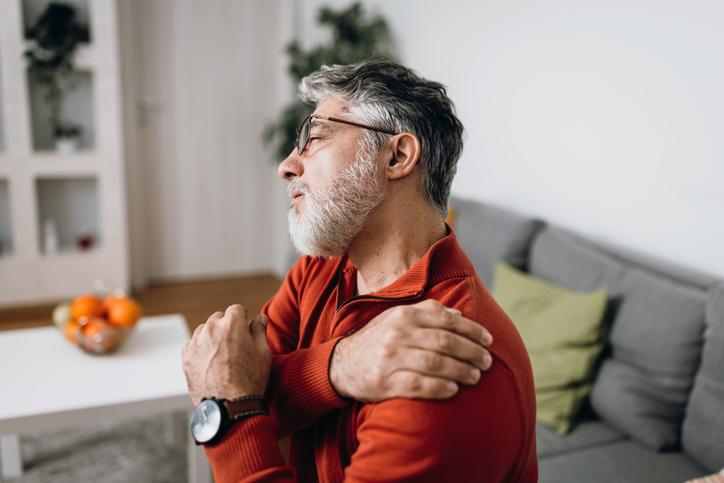“Osteoarthritis is a degenerative disease that worsens over time as you age and causes chronic pain,” said Jeremy Loloi, MD, Catholic Health Orthopedic Surgeon. “Your doctor will work closely with you to create a personalized treatment plan to manage your pain and symptoms to improve your quality of life.”
What is osteoarthritis?
Osteoarthritis (OA) causes the cartilage (strong connective tissue) between the bones to break down and become rough. The joint no longer moves smoothly and the bones rub together.
OA is the most common form of arthritis.
“Osteoarthritis is often referred to as a ‘wear and tear disease,’ but it can affect any joint in your body,” said Dr. Loloi. “It typically occurs in your neck, lower back, knees, hips or hands. You may have pain, stiffness, inflammation or limited mobility in multiple areas of your body.”
What causes osteoarthritis?
The two types of osteoarthritis are primary osteoarthritis and secondary osteoarthritis.
“Physicians do not know the exact cause of primary OA, but it tends to progress as you get older,” said Dr. Loloi.
He explained that secondary osteoarthritis can occur after a joint injury, such as a ligament tear or bone fracture. “OA typically develops slowly over time, but an injury can make it happen more quickly,” said Dr. Loloi.
What are the risk factors for developing osteoarthritis?
Risk factors for osteoarthritis include:
- Gender. Women are more likely to develop osteoarthritis than men.
- Age. The likelihood of developing OA increases with age, generally in people over 50.
- Obesity. Extra body weight causes more stress on your weight-bearing joints.
- Genetics. A family history of osteoarthritis increases your chance of developing OA.
- Repetitive motion. Overusing a joint during activities like a job or sport can cause OA.
- Injury. OA can develop more rapidly after an injury.
- Musculoskeletal abnormalities. People born with bone deformities like defective cartilage or malformed joints can be at higher risk for OA.
What are the symptoms of osteoarthritis?
“Symptoms of osteoarthritis tend to begin slowly and build over time,” said Dr. Loloi.
The most common symptoms of OA include:
- Joint instability
- Reduced range of motion
- Stiffness and pain in your joints
- Swelling
- Inflammation
“These symptoms generally get worse the more you use the joint and typically ease with rest,” said Dr. Loloi.
How is osteoarthritis treated?
“There is no cure for osteoarthritis, but you can manage your symptoms,” said Dr. Loloi.
He emphasized that a healthy weight, a well-balanced diet and regular exercise have numerous benefits for managing OA.
“A healthy weight takes the pressure off of your joints, which makes it easier and less painful for you to do low-impact exercises like walking and swimming that build muscle strength and increase joint support,” he said. “Not only do you help your osteoarthritis when you make healthier lifestyle choices, but you also reduce your risk for heart disease, diabetes, high blood pressure and high cholesterol.”
In addition to exercise, some people with OA require physical therapy or medication. Your doctor will recommend the best treatment options to ensure your OA symptoms are managed and do not worsen.
“Our goal for patients with osteoarthritis is to ensure they are living a life without pain and discomfort,” said Dr. Loloi.
Explore Catholic Health's orthopedic services.





